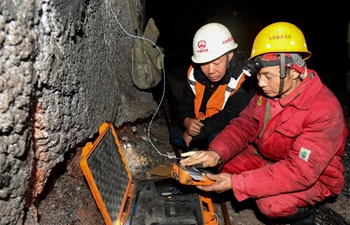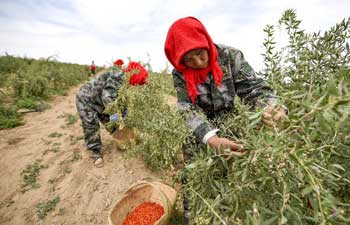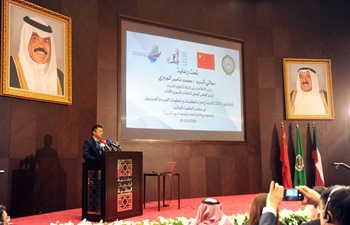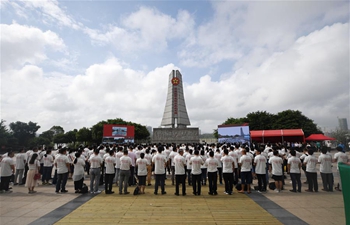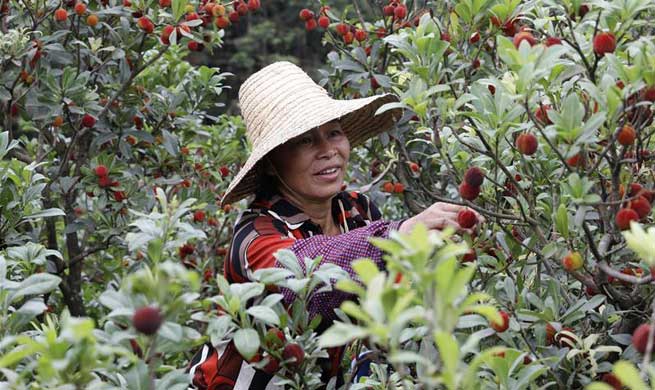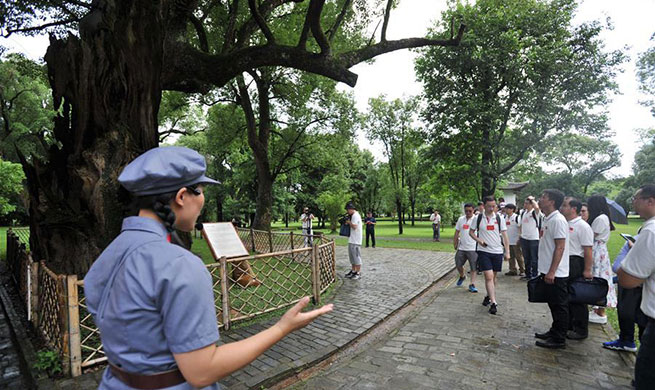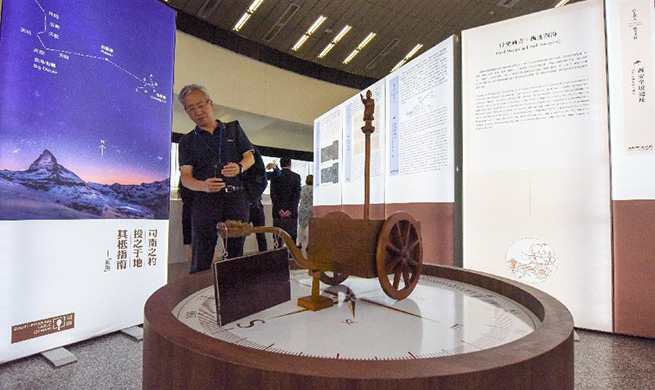CAPE TOWN, June 12 (Xinhua) -- A South African community-based HIV/TB project has met the UNAIDS targets of 90-90-90 one year ahead of the 2020 deadline, it was announced on Thursday.
The project, undertaken in Eshowe, KwaZulu-Natal Province, has achieved the 90-94-95 results which mean that 90 percent of people living with HIV know their status, 94 percent of those are on antiretroviral treatment and 95 percent of those have a suppressed viral load, the international medical humanitarian organization Doctors Without Borders (MSF) said.
MSF released its findings at the on-going 9th South African AIDS Conference which kicked off on Wednesday at the Durban International Conference Center.
The organization said the results support MSF's view that interventions at community levels can successfully reach and directly support more people living with HIV who do not access conventional health services, which is key to getting ahead of the HIV epidemic.
Along with similar findings from several other HIV population surveys, the MSF results provide strong evidence that achieving the 90-90-90 targets is possible in South Africa, along with hopeful data suggesting that the number of new infections is decreasing in certain areas, MSF said.
The 90-90-90 target is an important indicator of the success of a country's HIV response.
"We've shown that it's possible to reach 90-90-90 in an area with one of the highest HIV infection rates in the country, where one in four people is living with HIV," said Dr Liesbet Ohler, Project Medical Referent for Eshowe.
These results, he said, are testament to the full engagement of the entire community.
Everyone - from local civil society and patient groups, health staff and traditional health practitioners, traditional leaders and their members - was deeply involved in designing and helping this project to deliver from the beginning, according to Ohler.
"Importantly, we have ensured 94 percent of people who tested HIV positive started treatment, including people who are much less likely to test for HIV and link to care, such as men," he said.
The "Bending the Curves" project, which started in 2011 before the 90-90-90 targets were set by UNAIDS in 2013, aimed to bend the curves of new HIV infections, and HIV-related illness and death. Numerous activities were launched in partnership with communities and the KwaZulu-Natal Department of Health to prevent HIV infection, increase HIV testing, link people quickly to care, and support their adherence, retention and suppression on treatment.
Today the project covers 10 clinics and two hospitals. Early on, the project invested in community-based prevention and HIV testing strategies, including extensive door-to-door testing, with over 120,000 door-to-door tests conducted between 2012 and 2018. Between 2015 and 2018, 1.35 million condoms were distributed annually.
"How did Eshowe get to 90-94-95? I would say it's the power of partnership. We had the total commitment of the traditional leadership, and close collaboration with the departments of health and education at each stage," said Musa Ndlovu, MSF's Deputy Field Coordinator in Eshowe.
"In the early days of this project, it was almost impossible for people to even imagine talking about HIV. Today people even stop our MSF vehicles and ask for an HIV test," he said.
The four-day AIDS conference are focusing on innovation in the area of HIV under the theme: "Unprecedented Innovations and Technologies: HIV and Change."
The conference is the second largest HIV conference in the world, attended by over 3,000 people, 25 percent of which are from countries other than South Africa, which has one of the highest HIV/AIDS prevalence in the world.
